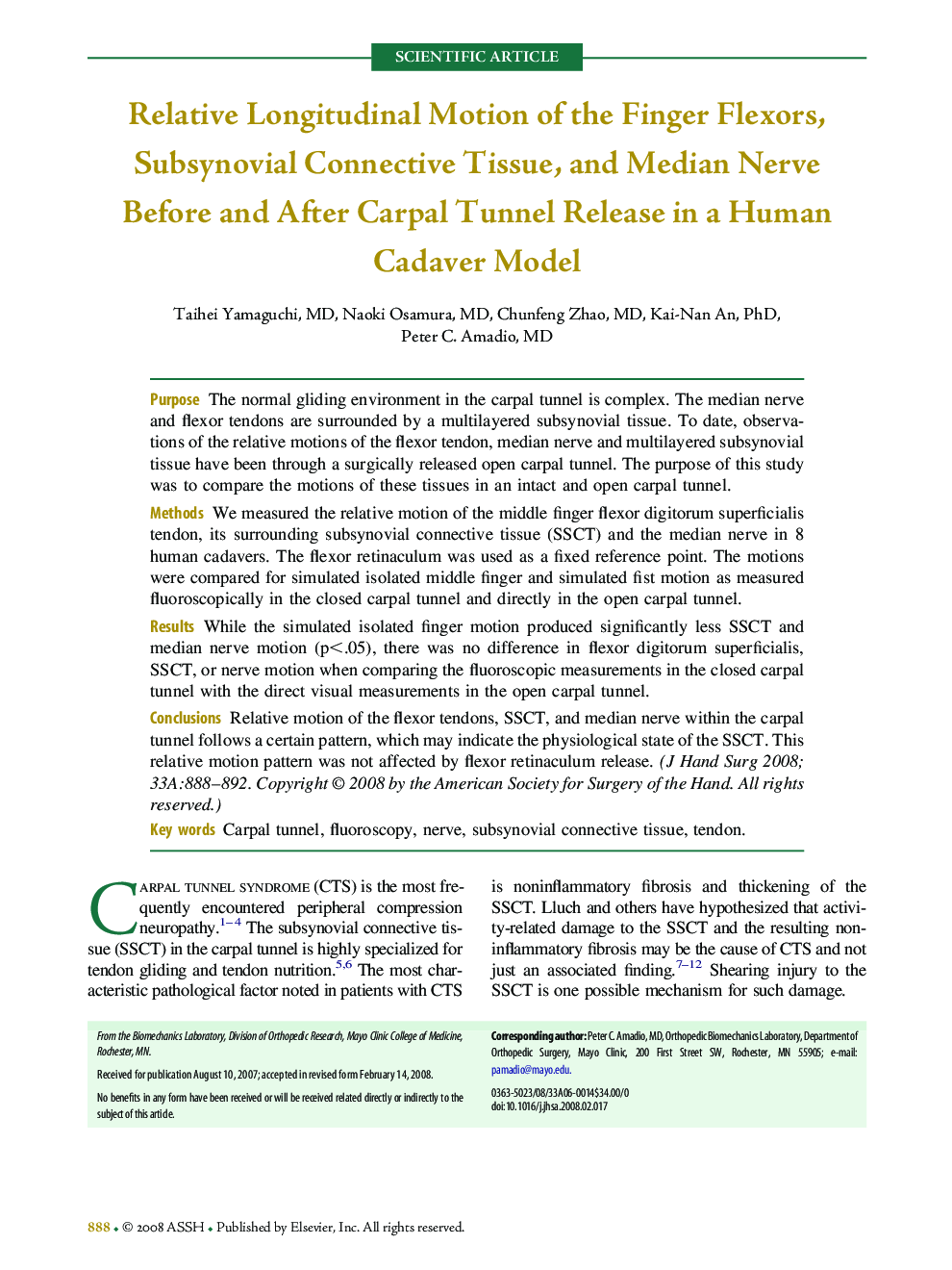| Article ID | Journal | Published Year | Pages | File Type |
|---|---|---|---|---|
| 4068457 | The Journal of Hand Surgery | 2008 | 5 Pages |
PurposeThe normal gliding environment in the carpal tunnel is complex. The median nerve and flexor tendons are surrounded by a multilayered subsynovial tissue. To date, observations of the relative motions of the flexor tendon, median nerve and multilayered subsynovial tissue have been through a surgically released open carpal tunnel. The purpose of this study was to compare the motions of these tissues in an intact and open carpal tunnel.MethodsWe measured the relative motion of the middle finger flexor digitorum superficialis tendon, its surrounding subsynovial connective tissue (SSCT) and the median nerve in 8 human cadavers. The flexor retinaculum was used as a fixed reference point. The motions were compared for simulated isolated middle finger and simulated fist motion as measured fluoroscopically in the closed carpal tunnel and directly in the open carpal tunnel.ResultsWhile the simulated isolated finger motion produced significantly less SSCT and median nerve motion (p<.05), there was no difference in flexor digitorum superficialis, SSCT, or nerve motion when comparing the fluoroscopic measurements in the closed carpal tunnel with the direct visual measurements in the open carpal tunnel.ConclusionsRelative motion of the flexor tendons, SSCT, and median nerve within the carpal tunnel follows a certain pattern, which may indicate the physiological state of the SSCT. This relative motion pattern was not affected by flexor retinaculum release.
